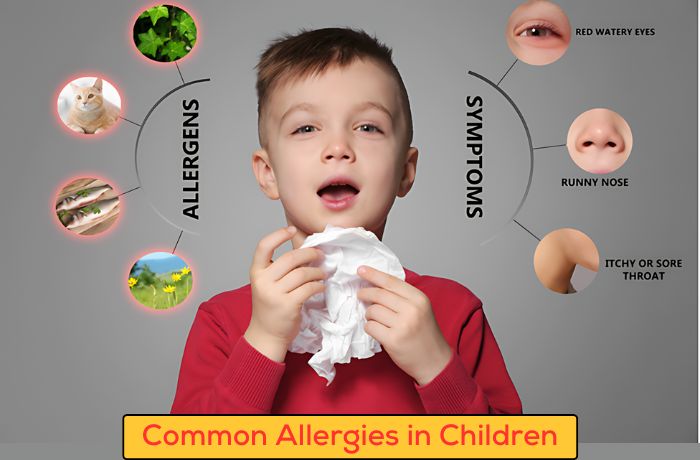How To Identify Nasal Allergies in Children

Runny noses, sneezing, and stuffy sinuses are common in kids, but when these symptoms linger or return with the seasons, they may be more than just a cold. Nasal allergies, or allergic rhinitis, in children are often mistaken for frequent infections, leading to delayed relief. Recognizing the signs of nasal allergies early can significantly improve your child’s comfort and overall well-being. Here are ways to identify nasal allergies in children.
Runny or Stuffy Nose
A runny or stuffy nose is a fundamental symptom of nasal allergies. A child with allergic rhinitis often exhibits a clear, watery nasal discharge, which distinguishes it from the thicker mucus associated with a common cold. This nasal discharge may persist for weeks or even months during allergy seasons or when exposed to common allergens.
Nasal congestion may lead to mouth breathing, particularly at night, due to blocked nasal passages. Frequent nasal discharge or congestion could indicate sensitivity to environmental triggers. Parents should monitor patterns, particularly if symptoms worsen after exposure to potential allergens such as pollen during spring or dust indoors.
Frequent Sneezing
Frequent sneezing is another hallmark of a nasal allergy. This symptom occurs as the body’s immune response to allergens, resulting in repeated, uncontrollable sneezes. Unlike sneezing due to a cold, which typically subsides after a short period, sneezing caused by allergies tends to persist for longer durations and may happen in bursts. While sneezing itself is not harmful, its frequency can disrupt a child’s daily activities. Observing sneezing patterns and paying attention to potential triggers, such as playing outdoors in high-pollen environments or being near pet dander, can help identify the cause.
Itchy and Watery Eyes
Children with allergic rhinitis often experience itchy, watery eyes alongside nasal symptoms. Allergic reactions can cause inflammation in the conjunctiva, resulting in redness, irritation, and a watery appearance. This symptom is common when allergens, such as pollen or dust, come into contact with the eyes.
Children may frequently rub their eyes, which can worsen irritation. Such actions may lead to more discomfort, including swelling or further redness. Monitoring the presence of these symptoms, especially during allergy seasons, can provide clues to the underlying condition.
Dark Circles Under the Eyes
Dark circles under the eyes, also referred to as “allergic shiners,” are a notable indicator of nasal allergies. These appear as purple or bluish discoloration around the lower eyelids. Allergic shiners develop due to poor blood drainage through the nasal passages, which can occur during prolonged congestion.
This symptom may lead caregivers to believe a child is sleep-deprived, but it often directly correlates to chronic nasal allergy symptoms. Identifying these dark circles along with other signs, such as sneezing and nasal congestion, is fundamental in recognizing allergic rhinitis.
Discover Treatment Options for Nasal Allergies
Identifying nasal allergies early empowers parents and caregivers to seek appropriate care and management. If your child experiences the symptoms above regularly, consulting a pediatric allergist can confirm the diagnosis and develop an effective treatment plan. Contact a specialist today to explore expert nasal allergy management and treatment options.
- What to Expect When Visiting a Foot and Ankle Specialist
- Causes of PTSD
- The Link Between Plantar Fasciitis and Weight Gain: What You Need to Know
- How Pet Ownership Can Positively Impact Life with Fibromyalgia
- The Importance of Stretching and Flexibility in Sports Medicine
Dr. Emma Green is a health and wellness expert with over 10 years of experience in nutrition and fitness. Passionate about helping others live their healthiest lives, Dr. Green shares practical advice on wellness, nutrition, and sustainable living through LivingSpristine.

